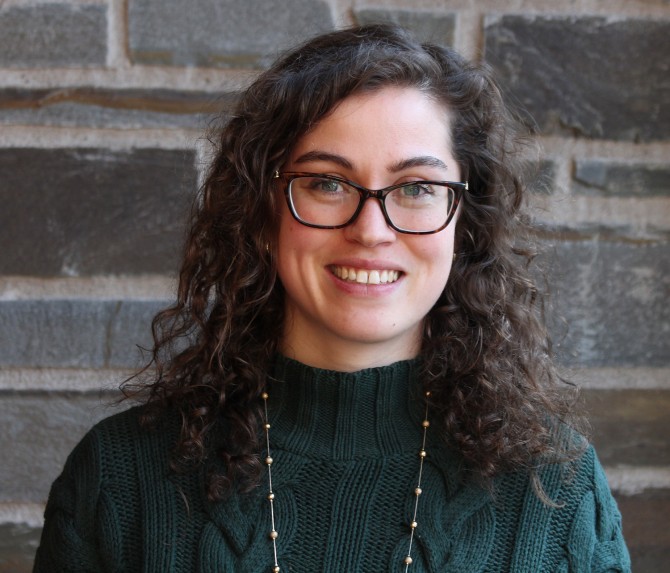News directly from Cornell's colleges and centers
When No One Believes: How a Law School Clinic Helped Asylum Seeker Get Second Chance
By Estelle McKee
Immigration judges have wide leeway to decide whether the asylum seekers who appear before them are lying or not, and such decisions are almost impossible to reverse. This is especially true in the U.S. Court of Appeals for the Fifth Circuit, which handles appeals from immigration judges in Louisiana—some of whom deny asylum in over 90 percent of their cases. One such judge presided over the case of “X,” a Cameroonian asylum seeker.
X testified that the military in Cameroon had arrested him, accused him of helping Anglophone rebels, beat him, and tortured him with electric batons. He submitted photos of his house, which soldiers had burned. He produced affidavits from family members, church members, and friends describing his disappearance and the soldiers who came looking for him. Human rights reports confirmed the violence.
On February 25, 2020, the immigration judge found his testimony not credible and entered a removal order. The Board of Immigration Appeals (BIA) affirmed.
By the time Cornell Law School’s Asylum and Convention Against Torture Clinic got involved, U.S. Customs and Immigration Enforcement (ICE) had moved X to a for-profit prison that holds immigrants in rural Louisiana. X had fallen ill, and his medical records showed that his blood pressure was dangerously high. Detainees around him were catching COVID; some were dying. The clinic, with the help of the Louisiana Advocates for Immigrants in Detention, filed a request to get him out. On February 2, 2021, X left the prison, free for the first time since setting foot on U.S. soil eighteen months earlier.
The team of Cornell Law students that worked on the case—Rachel Skene and Emma Sprotbery, who are now in their third year, and Johannes Maronga, J.D. ’21—decided on a two-pronged challenge to the immigration judge’s adverse-credibility findings. Working under Clinic Director Estelle McKee, clinical professor of law, the team moved to reopen X’s removal proceedings at the BIA based on new evidence—an affidavit and photos from X’s pastor demonstrating that soldiers were still looking for him. And they petitioned for review in the Fifth Circuit, with a motion to stay X’s removal.
The students focused closely on what had happened to X at trial. The immigration judge had found X’s testimony inconsistent because he had used the word “wrist” with a Pidgin English interpreter, and “arm” without one. Maronga, who is from Zimbabwe, confirmed there was only one Pidgin English word for both, and it could be interpreted either way. Skene found a Pidgin English dictionary to prove it. The judge had also reasoned that X had misidentified a photo attached to his siter’s affidavit. But the students noticed that the photo was listed as a separate exhibit, with a separate exhibit number, and described in the exhibit list just as X had identified it. This photo was not attached to X’s sister’s affidavit at all, and X’s testimony was correct. The judge also faulted the affidavit of X’s sister for not discussing X’s injuries, but the students argued that she never saw X after he escaped detention; her affidavit was limited to her personal knowledge and corroborated other parts of his testimony.
The immigration judges opinion was riddled with such errors, repeated over and over again. But the students had an uphill battle. In the BIA, published decisions reversing adverse-credibility findings are uncommon. In the Fifth Circuit, they are nearly nonexistent. But on April 15, 2021, there was a glimmer of hope: the Fifth Circuit stayed X’s removal. Decisions on stay motions rest largely on how the court views the underlying merits of the asylum seekers claim, so this was a positive sign. And it relieved X of his worry that ICE might show up one day and put him on a flight to Cameroon.
Then more good news: on February 3, 2022, the BIA reopened X’s removal proceedings, determined that X had established a prima facie claim for asylum, and remanded his case to immigration court. It was a narrow win of two to one, with one appellate immigration judge dissenting. But X now has a second chance. He has two appellate immigration judges who think he is telling the truth. He has three law students who believed him all the way to the Fifth Circuit. And the clinic will make sure he has a lawyer when he returns to immigration court.
The students were deeply moved by X’s case and kept in close touch with him throughout the semester. Sprotbery continued to work with him afterwards, and recently obtained a work permit for him. She described her experience with X and his case as follows:
"Immigration law requires resilience; advocates hope and work towards the best outcome but have to brace their clients for the worst. At the outset, X's case seemed grim: a credibility case in the Fifth Circuit. But X's indomitable spirit and unflagging faith that his claim would prevail inspired our team. Despite suffering unspeakable violence at the hands of the Cameroonian government, he had faith that our government would provide refuge. Someday, I hope that our immigration system deserves X's faith—and his victory is, in my opinion, a tremendous step in the right direction."
Media Contact
Get Cornell news delivered right to your inbox.
Subscribe



